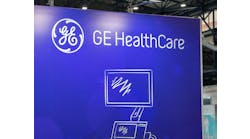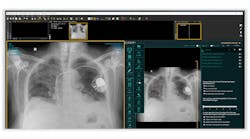Last December, the FDA released a preliminary framework as guidance for conducting real-world evidence (RWE) programs. According to the framework, RWE is clinical evidence about the usage and potential benefits or risks of a medical product derived from analysis of real-world data (RWD). In contrast to historical data collection methods from clinical trial settings, RWE leverages clinical, administrative, social, operational, and patient-reported outcome data captured at the time of the “patient care transaction” and not generated in a controlled setting.
With the release of this framework, many biopharmaceutical companies have started placing greater emphasis on RWE to prepare for coming regulations while driving the development of new therapies and supporting value-based contracts. The role of RWE will continue to grow in importance as organizations will be held to RWE requirements and need to demonstrate the real-world efficacy of the drugs and devices they are bringing to market.
The First Challenge of RWE
One initial hurdle with RWE is a general lack of understanding on how to best use it. Common learning curves associated with RWE include: identifying different ways to leverage RWD across the organization, determining potential biases in datasets, and optimally interpreting and utilizing the insights generated from RWD sources to support the development cycle in a reproducible way. Traditional RWD sources, such as claims and electronic medical record (EMR) data, have primarily been the foundation of RWE studies but are increasingly being challenged as being inaccurate with no linkability across other data sets of material clinical value in precision medicine trials. Though these traditional RWD sources are likely to remain important, they are insufficient to meet the specificity and sensitivity for understanding patient journeys, disease progression and treatment pathways in a way that matures the quality of evidence.
Specific Applications of RWE
While RWE has the potential to be leveraged successfully across various healthcare use-cases, the following are areas in which RWE will be especially valuable.
- Early stage discovery and exploratory analytics. Cancer drug development, as one therapeutic area, needs to be precise with targeted interventions, and with narrower and nuanced clinical indications influenced by genomic biomarkers. Increasing use of imaging linked to genomic and clinical data assets de-risks the variability generally existing in early discovery processes by identifying high respondent cohorts meeting the trial criteria.
- Targeted feasibility studies. Targeted use of multi-modal data assets representing imaging, genomics, EMR, patient reported outcomes, social data sets, CT data and more enables the optimization of target protocols earlier in the product lifecycle. For example, a new monoclonal antibody therapy for Multiple Sclerosis can track long-term impact by quantifying imaging plaques in a 10-year image set to demonstrate effectiveness of imaging based end-points. Similarly, in NASH (nonalcoholic fatty liver disease), viewing the disease journey by longitudinal liver images leads to stratification of strong responders to new drugs based on genetic and radiographic profiles. This leads to integrated pharmacogenomic and radiology decision support for treatment qualification. These examples are a testament to how and where the need for imaging in RWE is increasingly shifting investment priorities.
- Trial management and expansion of indications. The most discussed use-case of RWE is as a synthetic control arm, which uses RWE to model outcomes of the control group, thereby reducing or sometimes eliminating the need for placebo or comparator arms in clinical trials. The Flatiron Health use case in this context is important because of its groundbreaking use of RWE. However, there is still a critical need for broader validation processes inside such a trial, with deeper outcomes characterization from historical trial data. Recognizing imaging data as a novel ‘OMICS asset is important given the elevated cost, complexity and early recall risk associated with trials using this approach. So, while researchers might save and even accelerate their hypothesis using a synthetic control arm approach, but if they do not include imaging/pathology data in the evidence generation lifecycle, they might be calling this a win a little too soon.
E.g. imagine if the Bavencio trial, (PD-L1 inhibitor treating metastatic Merkel cell carcinoma) could be accelerated with better safety results if we were to use synthetics that included radiomic studies in our evidence management strategy. The adoption of external control arms with real patients or with synthetic cohorts can reduce trial participant size, duration, and operating investments. Having access to a global research network and linked data sets of importance allows researchers to approach site identification and recruitment with higher efficiency and speed and in many cases, even allowing them to establish expanded hypotheses for a known therapies indication influence to extend the value of the research.
Data Access Roadblocks and How to Overcome Them
To adapt to the RWE framework, pharma companies are increasingly seeking out data sources that complement claims and EMR data to provide a more complete picture of the patient’s healthcare history. Novel data such as genomics, imaging and patient-generated data from health apps and wearables represent the “next generation” of RWD. In Deloitte’s second annual benchmarking survey of leading life sciences companies, 60 percent of companies cited lack of access to the right data as the biggest barrier to boosting RWE. Moving forward, innovative new technology, networks with access to myriad data sources and strategic partnerships will emerge as strategies to break down siloes and enhance interoperability, supporting this industry-wide demand for better access to comprehensive datasets.
While claims and EMR data are fairly accessible, imaging and pathology data are not widely available, even though these sources provide some of the highest quality data in terms of material clinical utility. Medical imaging data in particular has emerged to offer a powerful and broad-based capability to shape and inform the shift to value-based, personalized healthcare in the oncology, cardiology and neurology spaces. Though massive amounts of medical images and associated reports are generated daily, researchers have historically found it difficult to efficiently tap into imaging because of limited access and/or complexities surrounding marrying it with other clinical data. Medical imaging’s contribution to drug development is beginning to be recognized, but not yet operationalized effectively at scale. As more imaging and other patient data becomes available in the coming years, managing this ever-expanding body of evidence will grow more challenging and the industry will need better strategies and tools to make the most of this pivotal data.
The Future of RWE and Value-Based Care
Value-based medicine and regulatory changes have created a need for life sciences, payers and providers to reengineer their businesses with RWE at the core. Including RWE earlier in the research and development phase warrants the need for deeper secondary data assets, such as imaging and pathology results, that influence therapy choices. There is currently no commercial RWD source that includes the above data sets. Networks are emerging as a powerful way to bring efficiencies to RWE and clinical research projects requiring consortia where ‘building’ a set of trial site partners can be executed in real time.
Regulators, public and private payers, and prescribers are driving the industry’s growing demands for broader information on real-world effectiveness and safety, which directly ties into the FDA’s new RWE framework. As these stakeholders seek to better understand the impact of a new product in a real-world setting by leveraging RWE, they are ultimately driving enhancements in utilization, reimbursement and the movement toward value-based care.
Janak Joshi is the senior vice president, chief technology officer and head of strategy for Life Image

